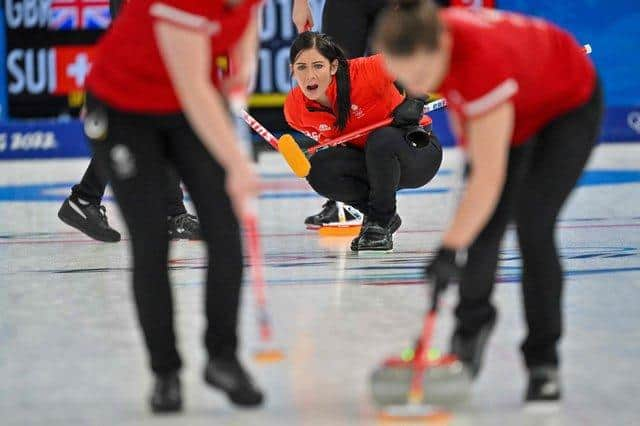Curling rules: As Team GB go for gold here's how to play the Winter Olympic sport
Known as ‘chess on ice’, curling is a sport that looks simple but is actually a complex tactical game.
The sport originated in Scotland during the 16th century where it was played on frozen ponds and lochs and immigrants exported the game to North America in the late 18th century – with the first Canadian club founded in Montreal in 1807.
Advertisement
Hide AdAdvertisement
Hide AdIt first became a Winter Olympic sport in Chamonix in 1924, where the UK won the men-only competition.
Five appearances as a demonstration sport followed, with it only becoming a regular Olympic sport in Nagano in 1998.
Here’s how you play.
How many people are in a curling team?
There are four people in a curling team: the lead, the second, the third and the skip.


Each player delivers two stones in sequence, starting with the lead and finishing with the skip, who captains the team.
The two teams playing a game take alternate shots, meaning that each end (or round) has a total of 16 stones.
How do you deliver a curling stone?
To deliver a stone a curler slides out on the ice as directed by the skip and must release the stone before it passes a line on the ice called the hog.
Before reaching the hog the player will give the stone a ‘handle’ by rotating it either clockwise or anti-clockwise, again as directed by the skip, which will determine which way the stone curls as it travels up the ice.
Advertisement
Hide AdAdvertisement
Hide AdThe target is called the house and is located at the other end of the 46 metre-long rink of ice, which is covered with tiny bumps called pebbles.
What does the sweeping do?
Two sweepers follow each stone up the ice and are allowed to start brushing the ice after the stone has passed the hog line.
Sweeping a stone makes it accelerate and curl less, allowing them to steer it and impacting where in the house the shot ends up.
The sweepers must not touch the stone or it is ‘burnt’ (removed from the game).
Once the stone has passed the t-line (a line passing through the centre of the house) opposition players can attempt to sweep it through and out of play.
What is the aim of the game?
At the completion of each end the number of stones closest to the ‘button’ (the bullseye) of the house will score.
The stone closest to the button effectively wins the end, with any further stones closer to the centre than the opposition’s best shot also counting – meaning it is possible, but highly unlikely, to get a maximum of eight shots in a single end (an eight-ender, which is curling’s version of golf’s hole in one).
After ten ends the team with most shots in total wins, while if the game is tied it will go to an 11th sudden death end.
What are the tactics?
Advertisement
Hide AdAdvertisement
Hide AdThe most important part of any end is who has ‘the hammer’ – the final shot.
A coin toss decides who starts with the hammer, then the team who lose an end take the hammer in the next.
If a end is blanked – with no score – the hammer is retained for the next end.
Generally it would be expected that the skip would be able to draw his final shot to win an end, unless the target is blocked by another stone.
The key to winning a game is to take more than one shot when you have the hammer, or to steal an end when you don’t.
To do so skips will ask their team to complete draws (placing a stone in the house), guard shots (placing a stone in front of the house to block the way for the opposition), takeouts (knocking opposition stones out of the house), and freeze shots (resting a stone against an opponent’s stone to make it more difficult to knock out of the house).
Read more:
A message from the Editor:
Thank you for reading this article. We're more reliant on your support than ever as the shift in consumer habits brought about by Coronavirus impacts our advertisers.
If you haven't already, please consider supporting our trusted, fact-checked journalism by taking out a digital subscription.
Comments
Want to join the conversation? Please or to comment on this article.